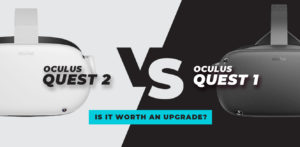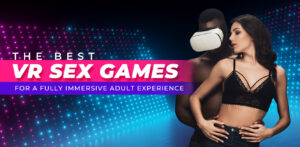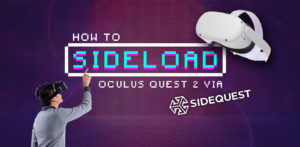Here we will be comparing two revolutionary mixed reality headsets, the Meta Quest Pro and the Apple Vision Pro. Through this comparison, we will delve into the distinct characteristics, capacities, and user interfaces of these state-of-the-art gadgets. These headsets are at the cutting edge of innovation in mixed reality, constantly pushing the boundaries of design, technology, and immersive interaction. In this in-depth look at these incredible devices, we’ll uncover their unique selling points in the world of mixed reality.
Specifications at a Glance
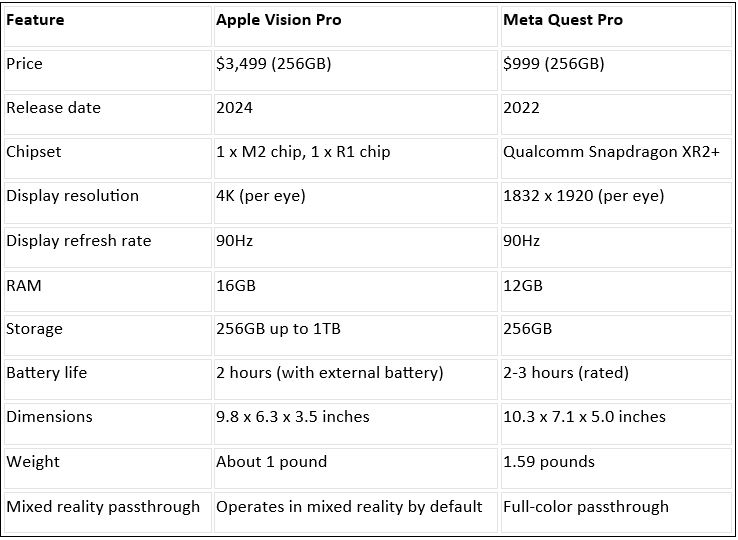
Design and Ergonomics
Although they take different approaches, Apple Vision Pro and Meta Quest Pro both put an emphasis on design and ergonomics to make using the devices easy and pleasant.
Apple Vision Pro
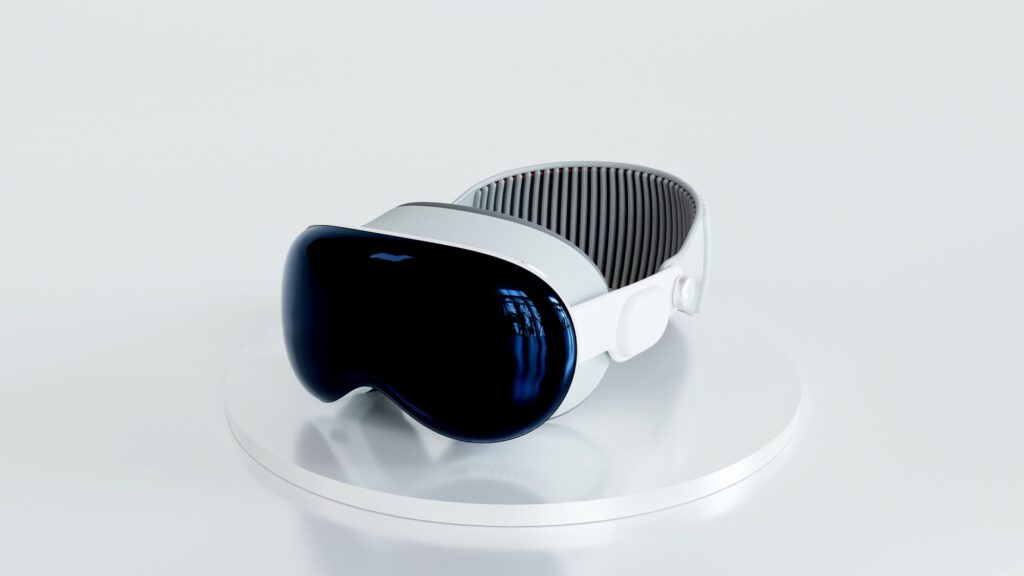
Photo from Apple
A dedication to modern style and high-quality materials is central to the Apple Vision Pro’s design ethos. An elegant touch to the device and a lens for the camera array—the curved sheet of 3D laminated glass on the visor of the headset does double duty. A new dimension of interaction and immersion is introduced by the integration of EyeSight technology, which projects the user’s eyes onto the front visor.
The Vision Pro takes a modular approach to ergonomics, so users can adjust the fit to their liking. Users with a wide range of face shapes can find the perfect fit with the Light Seal and Head Band thanks to their modular design, which comes in multiple sizes. The Head Band also has a handy knob for micro-adjustments, so you can get the perfect fit every time.
Meta Quest Pro
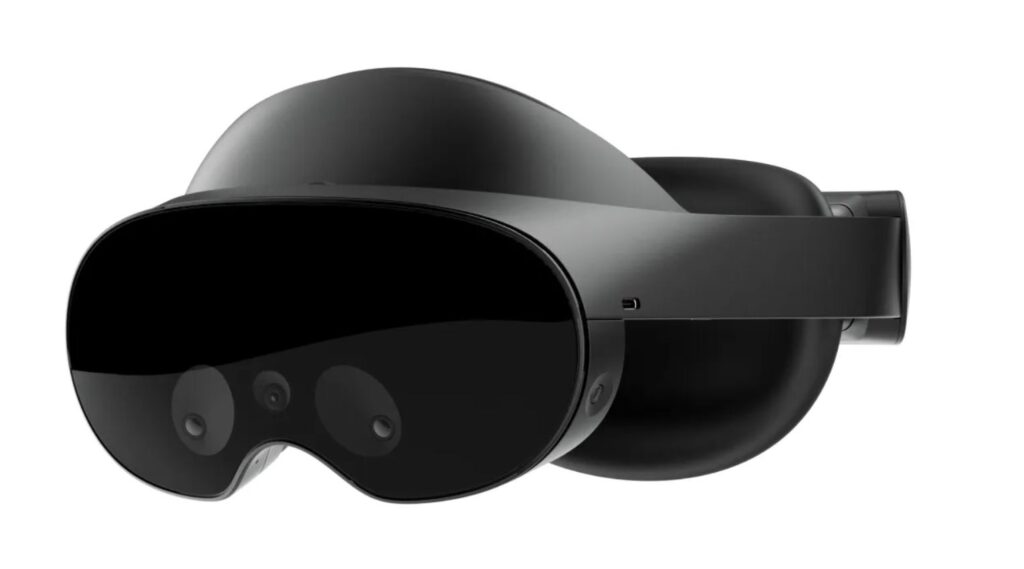
Photo from Meta
The Meta Quest Pro, on the other hand, is an attempt at a lightweight, well-balanced design that will improve comfort for long periods of use. The Quest Pro may not have the Vision Pro’s high-quality materials, but it more than makes up for it with its stylish and practical design, which takes design cues from ski goggles. An added practical touch is the front-facing cameras mounted on the visor; these allow for full-color passthrough and improve the mixed reality capabilities of the headset.
With its customizable features, the Quest Pro takes an ergonomic “one size fits all” approach, making it suitable for a broad variety of users. Adjusting the screen distance and ensuring a secure fit are done using the dials on the front and rear of the headset. To customize the level of immersion, users can install partial or full Light Blockers. Comfort during long gaming sessions is guaranteed by the balanced weight distribution, which is helped along by the built-in battery located at the rear of the headset.
Verdict
When it comes to design and ergonomics, both the Meta Quest Pro and the Apple Vision Pro aim to provide comfortable and user-friendly experiences. In contrast to the Vision Pro’s premium materials and emphasis on personalization, the Quest Pro aims for a lightweight, balanced design that will appeal to a wider audience. When it comes down to it, both headsets provide fresh ways to make mixed reality gaming more comfortable and immersive for the user.
Display Technology
When it comes to improving gameplay and providing immersive visuals, the display technology used by the Apple Vision Pro and the Meta Quest Pro is crucial.
Apple Vision Pro
Superior to standard LCD panels in terms of resolution, the state-of-the-art Micro OLED screens used by the Apple Vision Pro are breathtaking. Even though each screen is about the size of a postage stamp, the Vision Pro manages to achieve a combined pixel count that should provide a resolution of 3800 x 3000. Users can enjoy vivid colors and sharp details that are on par with 4K TVs thanks to this high resolution.
A refresh rate of up to 90 Hz is made possible by the display technology of the Vision Pro, which guarantees fluid and smooth motion during gameplay. The headset also has a unique capability that lets it achieve a 96Hz refresh rate on content that is created at 24fps, which is great for making the viewing experience even better.
With the integration of Micro OLED displays, users can expect an expansive field of vision (FOV), providing a truly immersive gaming experience. However, specific details about the FOV are not yet available.
Meta Quest Pro
If you’re looking for a more immersive gaming experience, go no further than the Meta Quest Pro, which boasts LCD display panels with a resolution of 1832 x 1920 per eye. The Quest Pro’s pancake optics technology maximizes visual clarity within a compact form factor, even though it may not match the resolution of the Vision Pro.
The Vision Pro and the Quest Pro are similar in that they both have a refresh rate of 90 Hz, which guarantees fluid gameplay and less motion blur. The Quest Pro also has an impressive 106-degree field of view, so players can see a lot of what’s going on in their virtual world.
Verdict
Cutting-edge display technologies are what make the Apple Vision Pro and the Meta Quest Pro so great at creating lifelike gaming environments. Quest Pro’s LCD panels provide outstanding visual clarity and a large field of view, while Vision Pro’s Micro OLED displays excel in resolution and prospective FOV. Both headsets improve the gaming experience in mixed reality settings with their beautiful graphics and fluid performance.
Controller Experience
Different mixed reality headsets provide different degrees of immersion and control over virtual environments, and the controller experience greatly affects how users interact with these headsets.
Apple Vision Pro
Offering an entirely controller-free experience, the Apple Vision Pro is a game-changer when it comes to controller interaction. Thanks to its twelve cameras, six microphones, and five sensors, the Vision Pro is able to pick up on users’ eye and hand movements, in addition to voice commands, thanks to its sophisticated tracking technology. Natural gestures and voice commands make virtual content navigation and interaction a breeze with this cutting-edge design.
With no need for traditional controllers, players can immerse themselves in the experience and use their hands to control virtual objects and access menus. The Vision Pro’s eye-tracking capabilities further improve interaction by enabling features like gaze-based input and foveated rendering.
In addition, for those who like more conventional ways of input, the Vision Pro is compatible with external devices like the Apple Magic Keyboard, Mouse, and Trackpad.
Meta Quest Pro
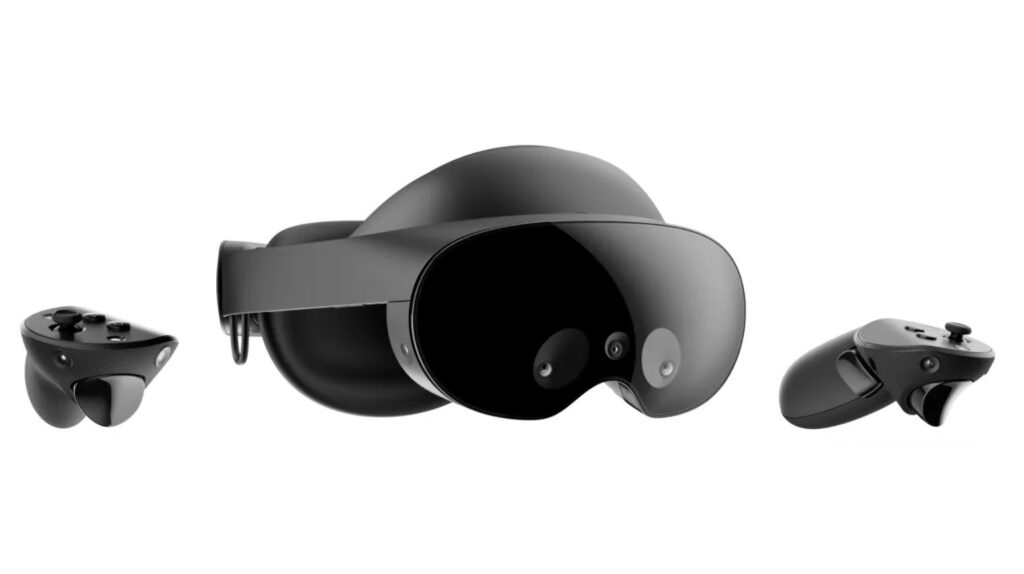
Photo from Meta
On the other hand, the TouchPro controllers included with the Meta Quest Pro provide a more conventional gaming experience. These controllers have built-in self-tracking technology that allows them to track motion in all directions without using any additional sensors. On top of that, the realistic tactile feedback provided by TruTouch haptics makes you feel even more immersed in the game.
Gaming and other interactive experiences benefit from the TouchPro controllers’ precise control over virtual interactions. Users are even able to write and draw in virtual environments with ease using the included stylus tips.
Users used to conventional gaming controllers will find the Quest Pro’s input method comfortable and dependable, though it isn’t quite as innovative as the Vision Pro’s controller-less design.
Verdict
Players with varying tastes in controllers will find something they like with either the Apple Vision Pro or the Meta Quest Pro. While the Quest Pro’s TouchPro controllers provide traditional gaming with precise control and tactile feedback, the Vision Pro’s controller-less design offers a futuristic and immersive method of interaction. Which one is better depends on personal tastes in immersion, level of control, and input method familiarity.
Performance and Battery Life
When it comes to responsiveness and portability, the user experience is greatly impacted by the performance and battery life of mixed reality headsets.
Apple Vision Pro
The Apple Vision Pro boasts top-notch performance tailored to mixed reality apps, thanks to its powerful M2 processor and R1 chipset. Though we don’t yet have all the performance metrics, we do know that the Vision Pro’s cutting-edge hardware will allow it to run smoothly and responsively.
Additionally, the Vision Pro’s R1 chipset prioritizes sensor inputs, guaranteeing a smooth transition between virtual and real-world settings with minimal input lag. The user experience, in general, and interactive tasks and gaming in particular, should benefit from this optimization’s increased fluidity and immersion.
Nevertheless, one significant drawback of the Vision Pro is its battery life. If you’re looking for a headset that can last all day without charging, go no further than the Vision Pro. Although it can be powered via USB-C for continuous operation, the lack of an internal battery makes it less portable and limits users’ mobility. To overcome this, they will need to bring external battery packs for longer periods of use.
Meta Quest Pro
The Meta Quest Pro, on the other hand, has a powerful Qualcomm Snapdragon XR2+ chipset that makes it ideal for realistic augmented and virtual reality experiences. The optimized design of the Quest Pro makes it possible to multitask smoothly and have responsive gameplay, making it ideal for use in a wide range of environments.
The integrated battery in the Quest Pro makes it very portable, and it also gives users a long amount of time to use it before they need to charge it again. The Quest Pro strikes a good mix between portability and performance, so it’s great for gamers who are always on the move and for long periods of gaming (though the actual battery life will depend on how much you use it).
Verdict
In conclusion, for various user requirements, both the Apple Vision Pro and the Meta Quest Pro provide outstanding performance. The Vision Pro’s processing power and optimization for mixed reality applications are top-notch, but some users may find it limited in mobility due to its reliance on external power sources. On the other hand, the Quest Pro’s integrated battery allows for extended usage without compromising mobility, resulting in a balanced combination of performance and portability. Performance, portability, and use case preferences will determine which one is better in the end.
Apps and Ecosystem
The adaptability and practicality of mixed reality goggles are highly dependent on the ecosystem as a whole and the apps that are available for them. Now, let’s explore the app offerings and ecosystem of the Meta Quest Pro and the Apple Vision Pro.
Apple Vision Pro
The new visionOS operating system, included in Apple’s Vision Pro, is built to facilitate mixed reality experiences. Despite the platform’s youth, developers have already started making Vision Pro-specific immersive 3D apps. The headset’s potential for interactive experiences is demonstrated by notable examples such as Mindfulness and Encounter Dinosaurs.
Additionally, the Vision Pro is built to work with iOS and iPadOS apps, so there is a huge selection of pre-existing apps available to users. Users can enjoy well-known apps that have been optimized for mixed reality environments, thanks to seamless integration and cross-platform functionality. These apps enhance productivity and entertainment.
More than a hundred games from Apple Arcade are compatible with the Vision Pro, giving users access to a wide variety of games. The variety of games available, which range from exciting puzzles to deep adventures, makes the headset a more enjoyable entertainment option for a wide range of people.
Meta Quest Pro
On the other hand, the Meta Quest Pro makes use of the vast Oculus app ecosystem, giving you access to a plethora of augmented and virtual reality apps. The Quest Pro provides a wide range of immersive experiences, including games, social interactions, and productivity tools, and it is compatible with Quest 2 apps and games.
Meta also ensures a continual flow of fresh content for Quest Pro users by adding exclusive titles and collaborations to its app library. The Quest Pro ecosystem caters to a wide variety of interests, including virtual world diving, educational simulations, and multiplayer experiences.
In addition, Meta’s ecosystem allows for easy social interaction and content sharing in the virtual environment through integration with popular services such as Facebook. Horizon Workrooms and Oculus Venues are two features that enhance the social aspect of the headset. They allow users to collaborate, attend events, and connect with friends in immersive virtual spaces.
Verdict
Meta Quest Pro and Apple Vision Pro both have extensive ecosystems that provide a wide variety of experiences and apps. The Vision Pro brings a new platform called visionOS that works well with Apple’s current apps, while the Quest Pro takes advantage of Oculus’s well-established ecosystem to offer a large collection of virtual reality and augmented reality content. The availability of apps, integration of platforms, and diversity of content are personal preferences that should be considered when deciding between the two.
Mixed Reality Experience
The Meta Quest Pro and Apple Vision Pro both have mixed reality capabilities, which blur the boundaries between the real and virtual worlds and constitute a giant leap forward in immersive technology. Let’s take a look at how these state-of-the-art headsets reimagine user interaction through mixed reality experiences.
Apple Vision Pro
![]()
The revolutionary EyeSight feature and state-of-the-art sensor array of the Apple Vision Pro provide an unmatched mixed reality experience. With EyeSight, users can show their eye movements on a front display, allowing others to join in on the gaze. Because of this one-of-a-kind feature, virtual communication becomes more realistic and interesting, and social interactions are improved.
In addition, Digital Persona is built into the Vision Pro, so users can make lifelike digital avatars to use in apps like FaceTime. The lines between our real and virtual selves are becoming increasingly blurred as a result of this technology’s ability to accurately reproduce facial expressions and gestures.
On top of that, the Vision Pro provides excellent real-world integration, so switching between VR and mixed reality is a breeze. Users can switch between completely immersed virtual worlds and more realistic overlays of the real world with the crown control located at the top of the headset.
Meta Quest Pro
The Meta Quest Pro provides an engaging mixed reality experience, even though it isn’t quite as advanced as the Vision Pro’s EyeSight and Digital Persona features. The full-color passthrough technology in the headset makes the user’s real and virtual worlds blend together seamlessly, giving a vivid depiction of the user’s surroundings.
The Quest Pro’s hand-tracking features and support for foveated rendering further improve interaction and immersion in mixed reality settings. Virtual reality eliminates the need for controllers by allowing users to interact with digital content, move objects around in virtual spaces, and navigate using natural hand gestures.
The Quest Pro’s mixed reality capabilities go beyond simple visualization; they also let users interact with AR apps and experiences. With its flexible mixed reality platform, the Quest Pro is ideal for a wide range of applications, including holographic interfaces and virtual world exploration with overlays.
Verdict
Despite their differences in design and functionality, both the Meta Quest Pro and Apple Vision Pro provide compelling mixed reality experiences. The Vision Pro is great at integrating with your real-world environment and having natural social interactions, but the Quest Pro is great at tracking your hands and has many uses for augmented reality. Each offers unique advantages and disadvantages in terms of mixed reality capabilities, user engagement, and ecosystem integration; ultimately, the decision comes down to personal preference.
Overall
The revolutionary EyeSight feature of the Apple Vision Pro is sure to make an impression. It improves social interactions and immersion by allowing users to share realistic gazes. The Vision Pro, when used in conjunction with Digital Persona technology, can generate lifelike digital avatars, effectively erasing the distinction between one’s real and virtual selves. Setting a new benchmark for immersive communication and interaction, its intuitive crown control and seamless integration with real-world surroundings further elevate the mixed reality experience.
In contrast, the Meta Quest Pro provides flexible augmented reality experiences and strong hand-tracking capabilities. The Quest Pro’s full-color passthrough technology and foveated rendering capabilities make for an accurate portrayal of the user’s environment and allow for natural interaction in VR/AR settings. Its ergonomic design and large VR/AR content library make it an attractive option for both enthusiasts and developers.
Choosing a Winner
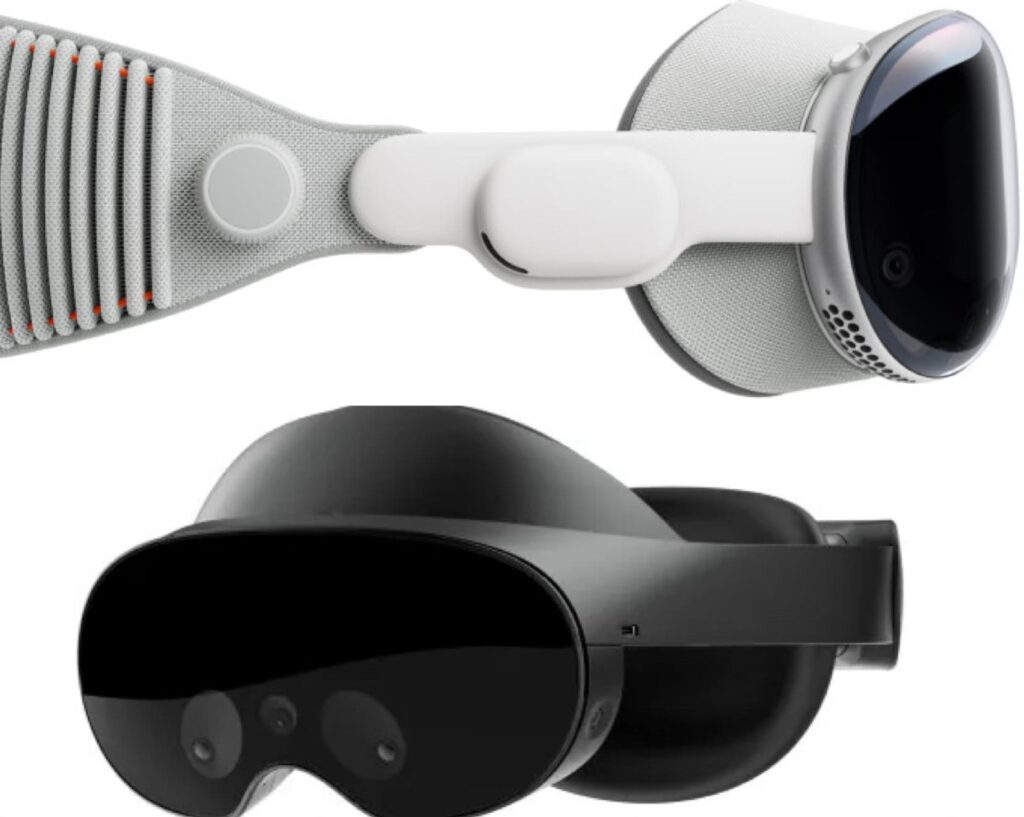
Although both headsets are packed with amazing features and functionalities, the Apple Vision Pro comes out on top in this comparison. It revolutionizes social interaction and immersion in mixed reality environments with its innovative technologies, EyeSight and Digital Persona. For individuals in search of state-of-the-art mixed reality experiences, the Vision Pro stands out thanks to its intuitive controls and seamless integration with the user’s actual environment. If the price point isn’t an issue then the AVP is the one to pick.
Of course, personal preference, specific use cases, and level of ecosystem integration should be considered when making a final decision. Among the many mixed reality headsets available, the Apple Vision Pro stands out as the best choice for users who value advanced technology, realistic social interactions, and immersive communication.
Alternative Opinion – Mark Zuckerberg
When asked about the differences between the Meta Quest Pro and Apple Vision Pro, Meta CEO Mark Zuckerberg offered his two cents. The Quest Pro, according to Zuckerberg’s video on Instagram, has a wider field of view, is more comfortable, and costs less than the Vision Pro. He went over the immersive content library and how the Quest Pro can be used with both hand controllers and tracking. However, Zuckerberg insisted that the Quest Pro was the superior product because of its cheaper price and better user experience, even though the Vision Pro had better entertainment capabilities.
Ultimately only you can decide truly which headset is best for you. What are you planning on using it for? What meets your needs and also stays within your budget can ultimately help you make the right decision.
Frequently Asked Questions:
Q: How much does the Apple Vision Pro cost?
The cost of the Apple Vision Pro is $3,499.
Q: What is the price of the Meta Quest Pro?
The price of the Meta Quest Pro is $999 for the 256GB model.
Q: What are the main differences between the Apple Vision Pro and the Meta Quest Pro?
The main differences between the Apple Vision Pro and the Meta Quest Pro include price, release date, display technology, performance, and ecosystem.
Q: Can I use controllers with both the Apple Vision Pro and Meta Quest Pro?
Yes, controllers are compatible with both Meta Quest Pro and Apple Vision Pro.
Q: How long is the battery life of the Apple Vision Pro?
The battery life of the Apple Vision Pro is approximately 2 hours with an external battery.
Q: Does the Meta Quest Pro have a built-in battery?
Yes, the Meta Quest Pro has a built-in battery with a battery life of 2-3 hours.
Q: Can I use existing apps with the Apple Vision Pro?
Yes, you can use existing apps with the Apple Vision Pro as it supports iOS and iPadOS apps.
Q: What chipset does the Meta Quest Pro use?
The Meta Quest Pro uses the Qualcomm Snapdragon XR2+ chipset.
Q: Is the Meta Quest Pro lighter than the Apple Vision Pro?
The Meta Quest Pro weighs around 1.59 pounds, slightly heavier than the Apple Vision Pro’s 1 pound.
Q: Can I use the Meta Quest Pro without controllers?
Yes, you can use the Meta Quest Pro without controllers, but it may require the use of controllers for certain interactions.

